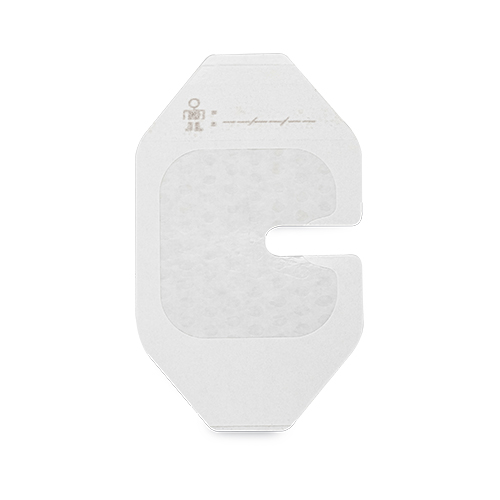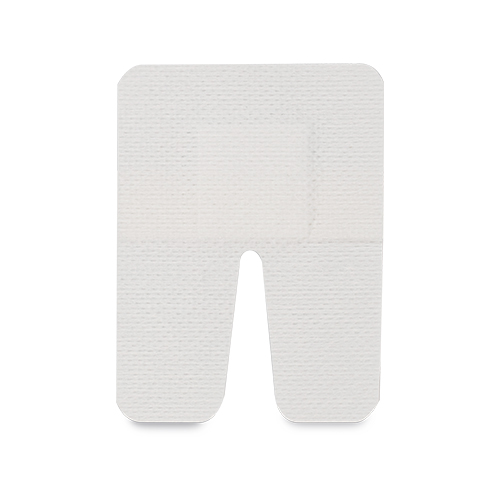News Categories
Intravenous (IV) therapy is a common medical procedure used to administer fluids, medications, and nutrients directly into a patient's bloodstream. An essential component of IV therapy is the IV dressing, which plays a crucial role in maintaining the integrity and safety of the IV site. In this article, we will explore what IV dressing is, its functions, types, and the importance of proper application.
Functions of IV Dressing
The primary function of an IV dressing is to secure the IV catheter in place. The catheter is a thin tube inserted into a vein to deliver the necessary fluids or medications. The dressing helps prevent accidental dislodgment of the catheter, which can lead to complications such as infiltration, extravasation, or infection.
In addition to securing the catheter, IV dressings also provide a barrier against external contaminants. They help protect the IV site from bacteria, dirt, and moisture, reducing the risk of infection. Some dressings are designed with antimicrobial properties to further enhance their protective function.
Another important function of IV dressings is to allow for easy visualization of the IV site. Clear dressings enable healthcare providers to monitor the site for signs of inflammation, swelling, or leakage. This early detection can help prevent serious complications and ensure timely intervention.

Types of IV Dressings
There are several types of IV dressings available, each with its own characteristics and advantages. The choice of dressing depends on various factors such as the type of IV catheter, the patient's condition, and the intended duration of IV therapy.
Transparent Film Dressings
Transparent film dressings are made of a thin, polyurethane or hydrocolloid material. They are highly transparent, allowing for excellent visualization of the IV site. These dressings are breathable and waterproof, providing a good barrier against contaminants. They are ideal for short-term IV therapy and are easy to apply and remove.
Gauze and Tape Dressings
Gauze and tape dressings consist of a piece of sterile gauze held in place by adhesive tape. They are a traditional type of dressing and are relatively inexpensive. However, they are less transparent than film dressings and may require more frequent changes due to moisture absorption. Gauze and tape dressings are often used for longer-term IV therapy or when a more secure dressing is needed.
Hydrocolloid Dressings
Hydrocolloid dressings are composed of a gel-like material that adheres to the skin. They are highly absorbent and can help manage exudate from the IV site. These dressings are suitable for wounds or sites with mild to moderate drainage. Hydrocolloid dressings are also occlusive, providing a good barrier against bacteria.

Composite Dressings
Composite dressings combine the features of different types of dressings. For example, a composite dressing may consist of a transparent film with an absorbent pad. These dressings offer the advantages of both transparency and absorbency, making them suitable for a variety of IV therapy situations.
Importance of Proper Application
Proper application of IV dressings is essential to ensure the effectiveness and safety of IV therapy. Here are some important considerations when applying an IV dressing:
Cleanliness
The IV site and surrounding skin should be cleaned thoroughly before applying the dressing. This helps remove dirt, bacteria, and oils that can interfere with adhesion and increase the risk of infection.
The IV site and surrounding skin should be cleaned thoroughly before applying the dressing. This helps remove dirt, bacteria, and oils that can interfere with adhesion and increase the risk of infection.
Sterility
IV dressings should be sterile to prevent the introduction of contaminants. Use only sterile dressings and follow proper aseptic techniques during application.
Secure Attachment
The dressing should be applied firmly to ensure that the IV catheter is securely held in place. Avoid wrinkles or loose edges that can allow for movement of the catheter or entry of contaminants.
Regular Inspection
The IV dressing should be inspected regularly for signs of loosening, leakage, or infection. If any problems are detected, the dressing should be changed promptly.
Changing IV Dressings
IV dressings need to be changed regularly to maintain the integrity of the IV site and prevent complications. The frequency of dressing changes depends on various factors such as the type of dressing, the patient's condition, and the presence of any signs of infection or inflammation.
In general, transparent film dressings may be changed every 5 to 7 days, while gauze and tape dressings may need to be changed more frequently, usually every 2 to 3 days. Hydrocolloid dressings can be left in place for longer periods, up to several days or even weeks, depending on the amount of drainage.
When changing an IV dressing, follow these steps:
Prepare the necessary supplies, including sterile gloves, a new dressing, antiseptic solution, and gauze pads.
Remove the old dressing carefully, taking care not to dislodge the IV catheter.
Clean the IV site and surrounding skin with antiseptic solution.
Apply the new dressing according to the manufacturer's instructions, ensuring a secure fit.
Dispose of the old dressing and used supplies properly.
Conclusion
IV dressings are an essential part of intravenous therapy. They serve multiple functions, including securing the IV catheter, providing a barrier against contaminants, and allowing for easy visualization of the IV site. There are several types of IV dressings available, each with its own advantages and applications. Proper application and regular inspection of IV dressings are crucial to ensure the safety and effectiveness of IV therapy.
Changzhou Major Medical Products Co., Ltd. was established in June 2005, focusing on the field of medical supplies for 17 years. It is a high-tech enterprise that is quality-oriented, engaged in the research and development, production and sales of advanced medical dressings.